Glass railings and canopies configurator
In May 2024 we will launch new web configurator for glass ralings and glass canopies. Stay tuned!
The configurator development has been financed by the European Union from the resources of the NextGenerationEU regeneration fund.

The answer is glass point fixings, brackets and supporting parts of different shapes and sizes, with which large panes of glass can be fixed to structures made from a variety of materials. In this way you can add a touch of modernity and airiness to any building, letting in more light and, if you use glass fins, enabling you to see out from any angle.
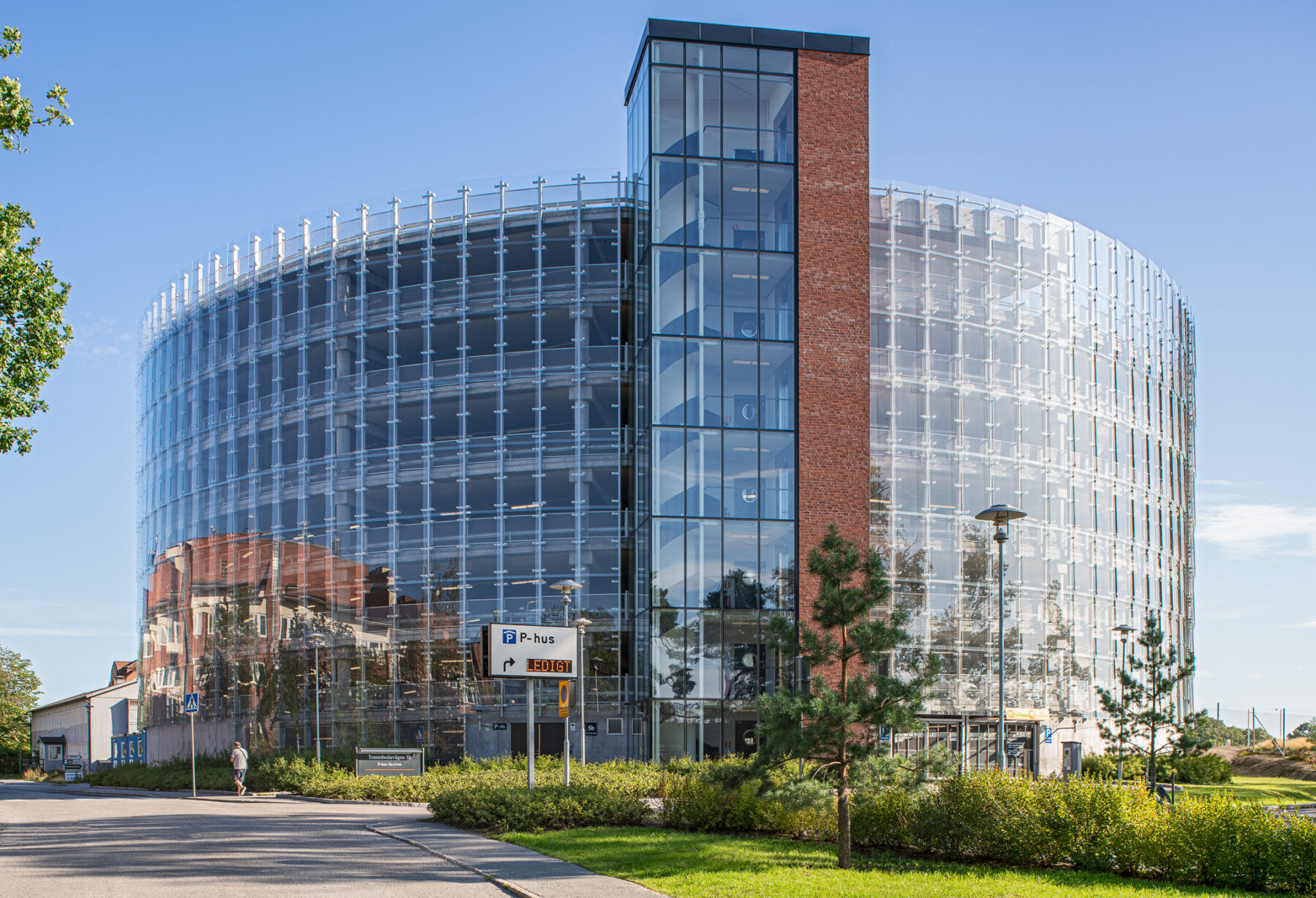
Photo: Michael Perlmutter
In addition to letting in more light, a facade that utilises glass point fixings is also extremely eye-catching. It is no exaggeration to say that however unique or exclusive the solution an architect comes up with, it can be brought to life using glass point fixings.
Moreover, glass point fixings can be used on different types of facades.
Glass screen
A glass screen is like a transparent shell covering the exterior of a building with a single layer of glass. An example of its use is the Estonian National Museum, where the concrete walls of the building are covered with a layer of silkscreen glass. Lighting between the glass and the wall makes the glass screen even more eye-catching.
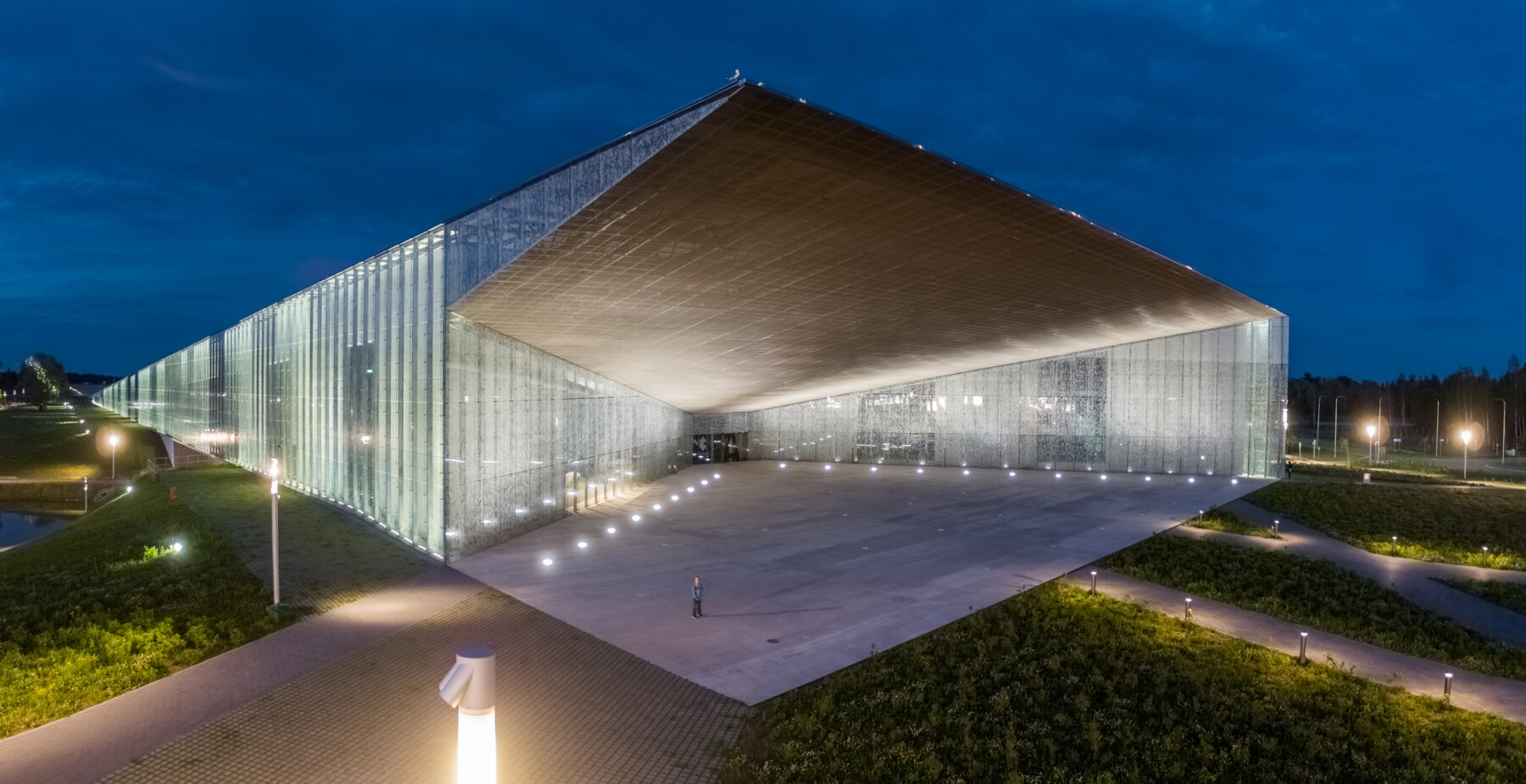
Photo: Kaupo Kalda
Glass can also be used inside buildings, for example around lift shafts, as balustrades or anywhere else the architect wishes to make use of an unusual solution. Glass panes without frames can be fixed at a wide range of angles using glass point fixings.
In the same way, glass can be used to cover a ceiling. Lights are often placed between the ceiling and the glass screen to produce an interesting overhead lighting effect.
The benefits of glass screens extend beyond their eye-catching appearance, however – to some degree they also protect against wind and noise and, to a lesser extent, provide heat insulation. Solar protection glasses and digital printed glasses will stop a space from getting too much sun i.e. overheating.
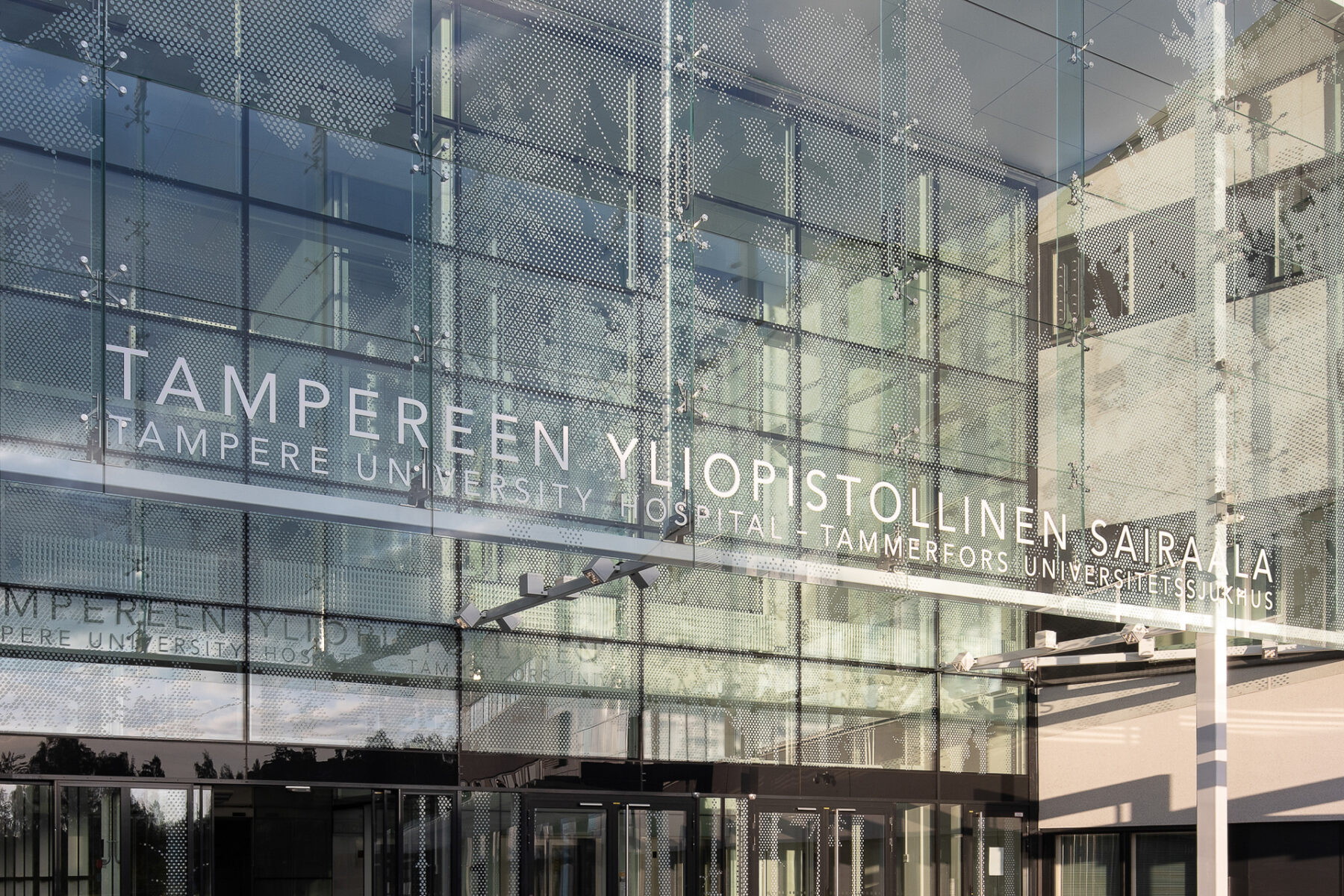
Photo: Tapio Koivula
Glass screens fixed to exterior walls can also be used to give older buildings a new look.
Insulated glass facades with glazed panes
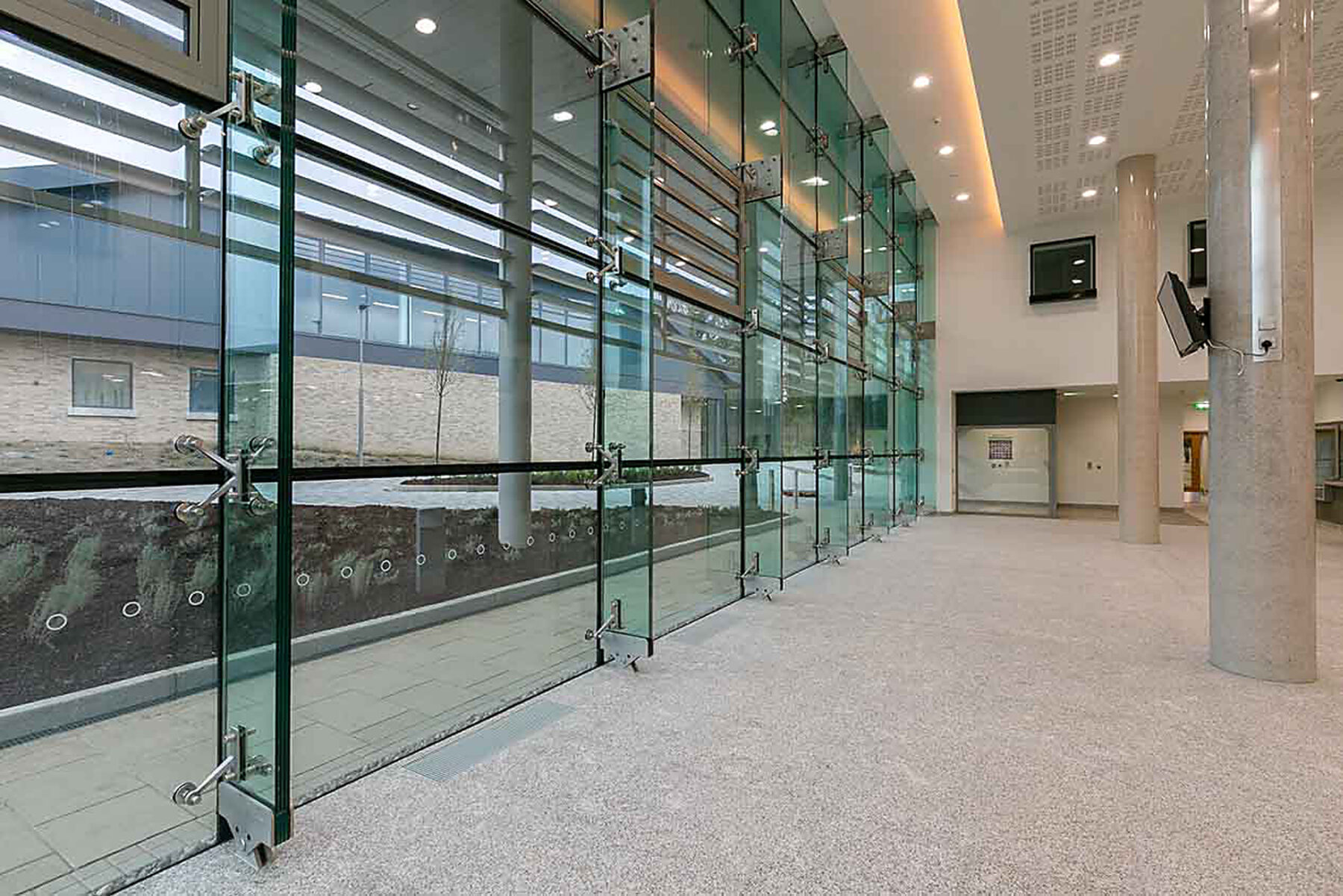
Glass point fixings are also suitable for use on insulated glass facades, that are used for the external walls of a building. In this case, a double- or triple-glazed glass unit is fixed to the load-bearing structure (which in exclusive solutions can be e.g. glass fins) using the point fixings. The result is a heat-retaining facade which is transparent from every angle.
A wide range of materials can be used for the main structure: glass fins, timber (including laminated timber), steel, concrete, composite beams and more besides.
If the point fixings are fixed to the interior glass pane only and do not extend to the exterior pane, will be much easier to clean the building’s exterior. There are no parts to get in the way: the surface is completely smooth from top to bottom. At the same time, this solution ensures that the glass retains as much heat as possible, since there is no thermal bridge.
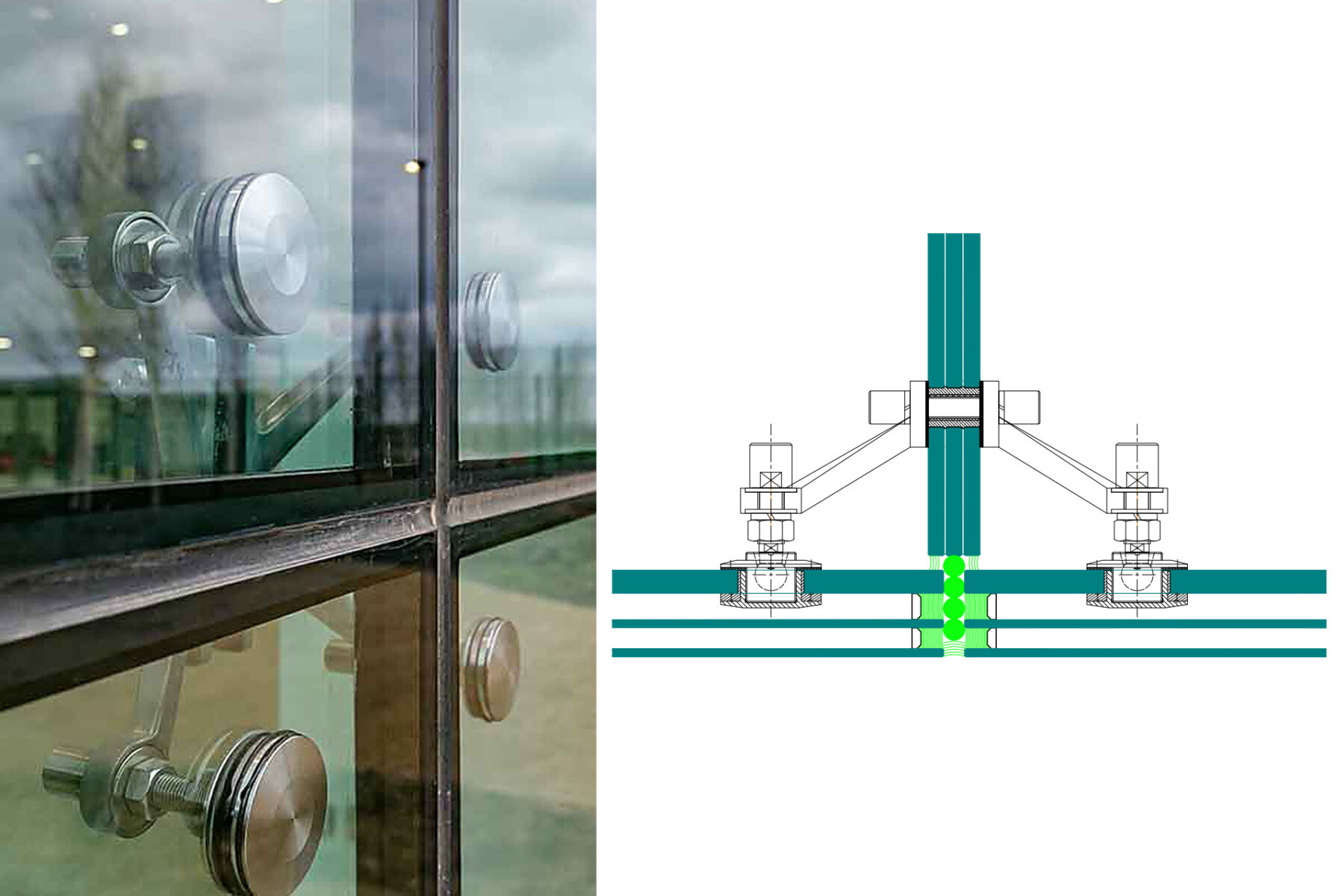
Roof lanterns and glass roofs – a way of making a building even brighter and more interesting
Glass point fixings can also be used for roof lanterns and glass roofs. A roof lantern is an architectural element via which more light enters a building. Roof lanterns are often made from plastic, but a glass lantern fixed with point fittings will lend the exterior of a building an even greater degree of exclusivity and interest.
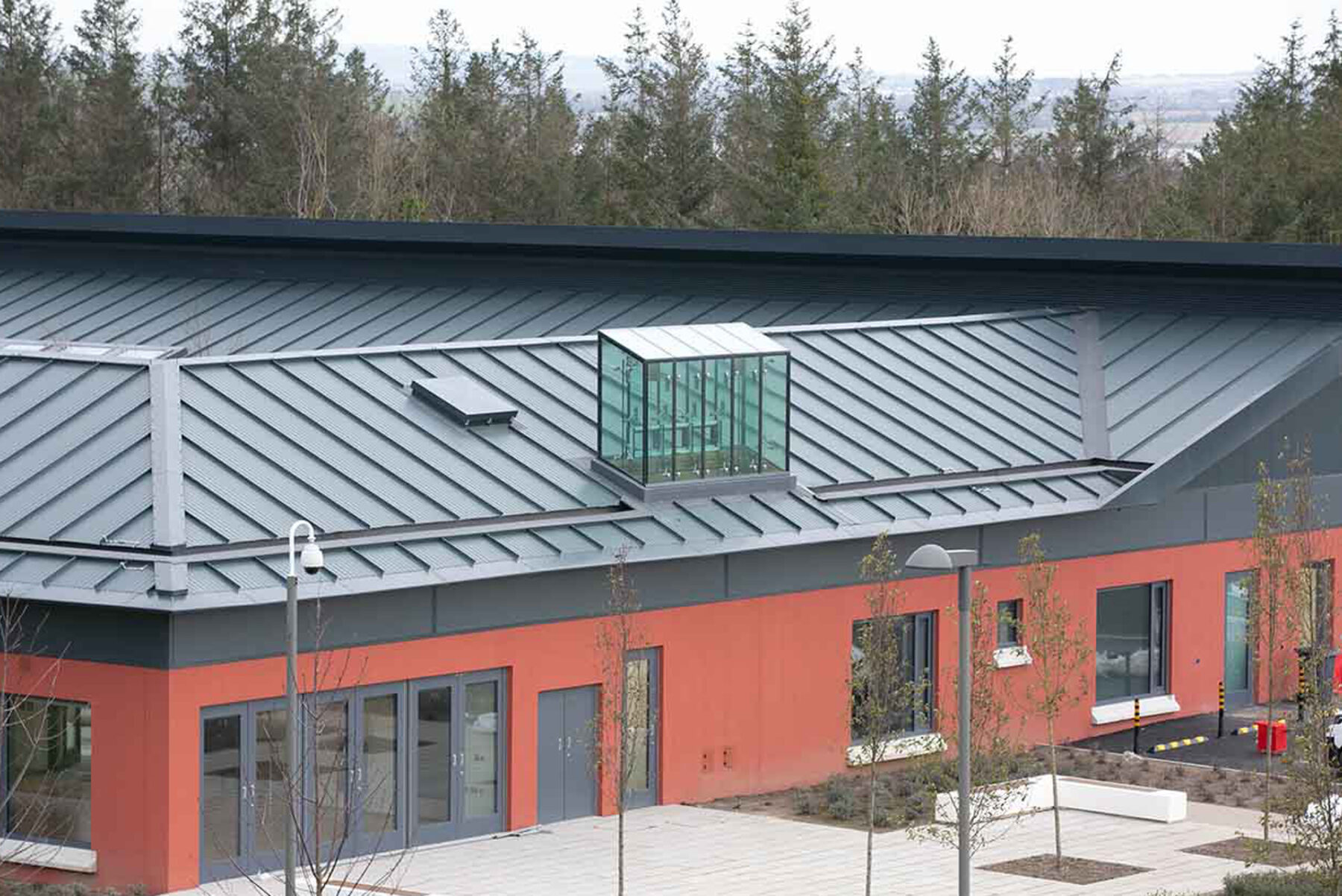
Glass roof fins can be simply and securely fixed to load-bearing structures (including glass fins) using glass point fixings. In addition to their own weight and wind load, roofing solutions must also take into account snow load.
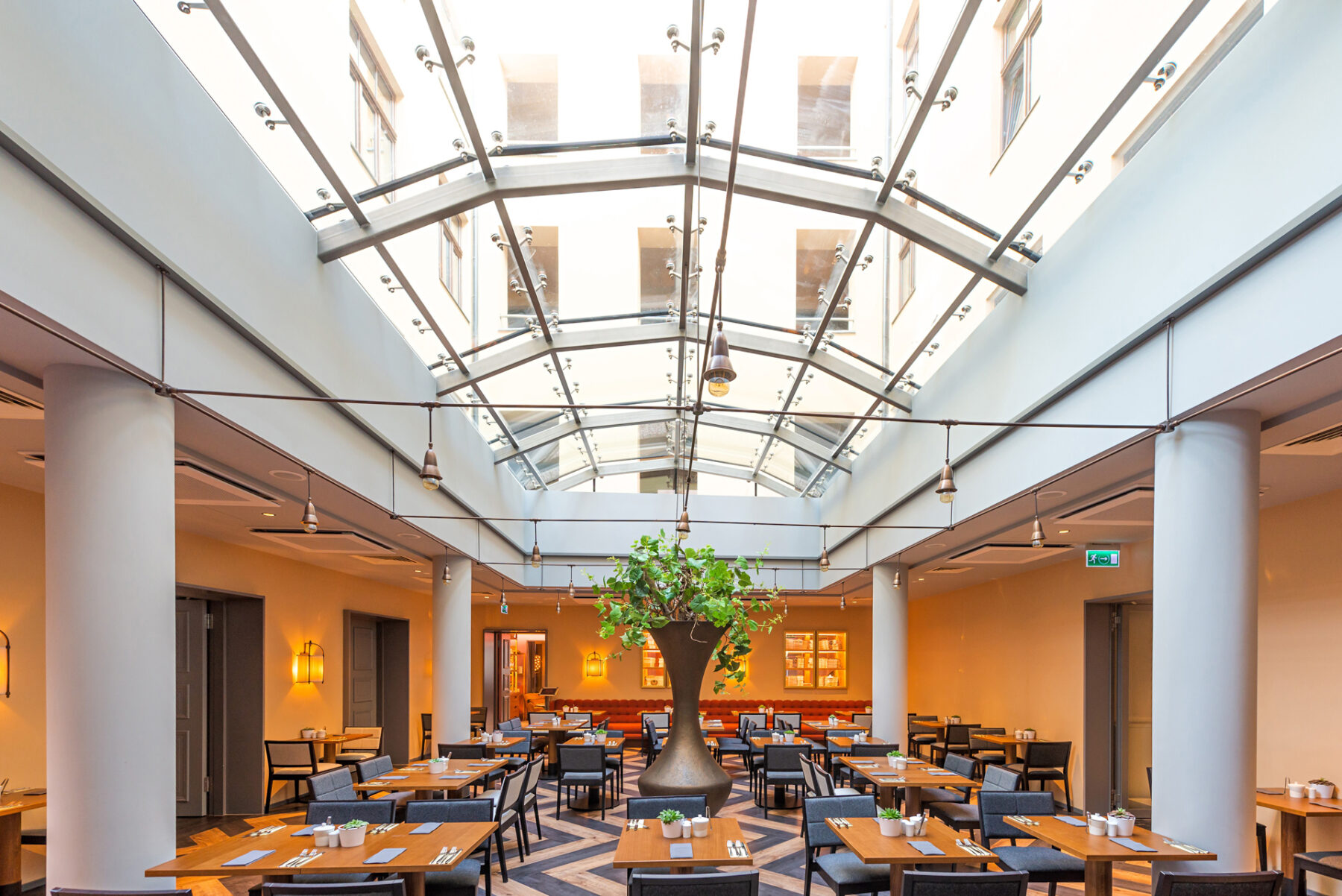
Photo: Aivars Siliņš, Municipal Agency “Rigas City Architect’s Office
We are here to help builders and architects
Architects are free to let their imaginations run wild and come up with truly exciting solutions, because where roofs and facades are concerned, the sky is the limit! Glass point fixings can be used to bring any design to life.
Those tasked with installing such solutions often find themselves at a loss, because they are niche products that not all builders are experienced with. Our own and other specialists who deal with such facades on a daily basis can be of help in bringing the architect’s vision to life.
Every facade that utilises glass point fixings requires a design-based approach from the builder, since the wind load affecting the facade and the dimensions of the glass are always different. The right thickness of glass needs to be calculated on the basis of the wind load, and the weight of the glass panes will of course depend on this. The wind load and the weight of the glass panes themselves will inform your choice of what to fix them with.
We help create safe glass facades: we do strength, wind load and other calculations; we offer solutions that meet all requirements; we draw up the designs; and we manufacture and supply the products, issuing them with strength declarations and a warranty. We provide our clients with an all-in-one solution.
Best use is made of our engineering know-how when we are brought in during the development stage of an architectural solution.
We have developed both Autodesk Revit and Archicad BIM objects for our full-glass railings in order to simplify the work of architects and designers. These are available to download under products: GPR1, GPR1F, GPR1Y and GPR3 glass railing profile. See the Revit BIM objects tutorial video here. The Archicad BIM objects user manual is provided in PDF format in the downloadable container. These are parametric BIM objects that can be used with the railings tool of the relevant software.
The following article describes the nature and possibilities of BIM in more detail.
What is the meaning of the term BIM?
In general, BIM has two meanings: (1) Building Information Modelling and (2) Building Information Management. In this article we focus on part (1), i.e. Building Information Modelling.
What is BIM?
BIM means three-dimensional models with information, i.e.
BIM = 3D geometry + information (e.g. information on materials).
In the case of the word BIM, the emphasis is undoubtedly on the ‘I’ – information. If we were to go back in time by 10 years, we would discover that BIM has always been in use in construction, just in another form. When glass railings or hollow core panels had to be installed at a construction site, the glass railing in question had to be accompanied by a 2D drawing and a data sheet containing specifications describing the product. Nowadays, the same information is simply interfaced with a 3D model and you can obtain product-specific information, 2D drawings, etc. from this model.
What is the benefit of BIM for builders?
The builder will obtain a design that is considerably better thought out. Model-based design projects contain up to 90% fewer errors than 2D projects. This means that there will be less improvisation and so-called from-the-hip solutions on the construction site. As a result, the customer will have a better planned building. A well-designed BIM model can be used quickly and easily to obtain material volumes, prepare more precise time schedules and create model-based budget systems.
What is the benefit of BIM for material manufacturers?
Figuratively speaking, you can think of a BIM model as a Lego set with balcony railings, windows, doors, sinks, kitchen tables and office chairs, i.e. BIM objects as blocks. Individually they may not contribute to much. In the overall picture, however, within the full model of an office building, these elements are of significant importance for architects, designers, builders and the customer. With the help of the aforementioned Lego blocks, the model of a building can be compiled easily using the existing solutions available on the market. Using this approach will help save all parties’ working time. The architect has no need to create products from scratch; the builder will quickly get an accurate overview and indication of construction volumes. The customer will get a better planned solution and a more precise as-built model. Everybody wins.
What is a BIM ‘Lego block’ or BIM object?
In essence, a BIM object is a digital twin of a specific product. By product, I mean a door, a window, a door handle, a stair railing, all kinds of structural elements, fastening elements, lighting fixtures, etc. The product you might see when visiting a company sales room is now digitally and virtually in front of you to be used by the architect or designer for creating a conceptual solution for the entire building/facility.
In order to achieve stability and efficiency throughout the construction life cycle, it is important that virtually every material manufacturer starts ‘talking BIM’ and has digital twins of their products available for designers/architects to use when creating the overall solution for the facility or building. It would be unprofessional to use railings or windows from US manufacturers for designing an office building to be built in Estonia just because all Estonian material manufacturers do not keep up with the times.
Adequate volumes can be obtained from a properly structured BIM model with a relatively simple effort. For instance, you could learn how many railings, windows and doors of a specific size the model contains. BIM will benefit us most when all parties have the corresponding capacity.
What softwares are used to create BIM models?
There are plenty of software applications in the world for creating BIM models, with various capabilities and price levels. Autodesk Revit, Archicad and Tekla are the most common softwares used by designers and architects in Estonia and Scandinavia.
Autodek Revit is quite a universal software and allows the user to create both structural and architectural solutions. Archicad is a software meant for architects, allowing quick and convenient creation of architectural models and concepts of buildings. Tekla is more specialised in structures, e.g. steel, concrete and reinforced concrete structures and models.
Ideally, BIM objects should be created for users of both softwares Revit and Archicad. The reason is simple – railings, doors and windows created in one program cannot be opened in another program. Handrails created in Revit will not open in Archicad and vice versa. The same applies for structural elements. It would be ideal to create BIM objects of a structure for both Revit and Tekla software.
What are BIM libraries and why are they needed?
BIM libraries are the technical catalogues of various material manufacturers, often those based in a certain region, meant to be used by the designers and architects in their daily work to simplify their workflow. The idea behind it is to give material manufacturers a specific environment for presenting their technical information, which is also used by architects/designers, so that manufacturers would not have to publish everything on their websites. These environments mostly have some sort of direct link to the BIM software used, e.g. the ProdLib digital product catalogue offers direct connection to Revit, Archicad and many other software applications.

It is user-friendly as it saves time for architects and designers, allowing them to access everything they need directly from their own software instead of spending hours looking for information and the required models on the manufacturer’s website and then downloading them.
Where does BIM begin and end?
BIM begins with the customer’s vision to create something and ends at the customer’s site after this vision has become a reality. It has happened this way for thousands of years every time a great figure in history has had an idea to create something. The only difference is that, where such projects initially took 10 years or sometimes a lifetime to carry out, today, complete urban spaces are built in just a few years. How is this possible? The answer is simple. Everything has become more efficient. Instead of human hands, we have machines operated by drivers or even unmanned machines or drones. Instead of creating their design projects on paper, designers use various 3D options for their work. Communication between all project parties has become more efficient. Simply put, in the long run, BIM means just doing the same thing with more forethought and efficiency. It also represents the desire to use the same BIM model later for managing the building/facility. Why should we keep the information of a building in a project archive and search for it on aged, yellow paper when all of this can be stored on a USB stick or cloud application which is always accessible?
By Kaur Tull, TULITEC OÜ
Get in touch with us
If you have questions about our products, delivery or special solutions, please feel free to contact us. Hardi will respond to your letter. It is best to use the contact form below.





